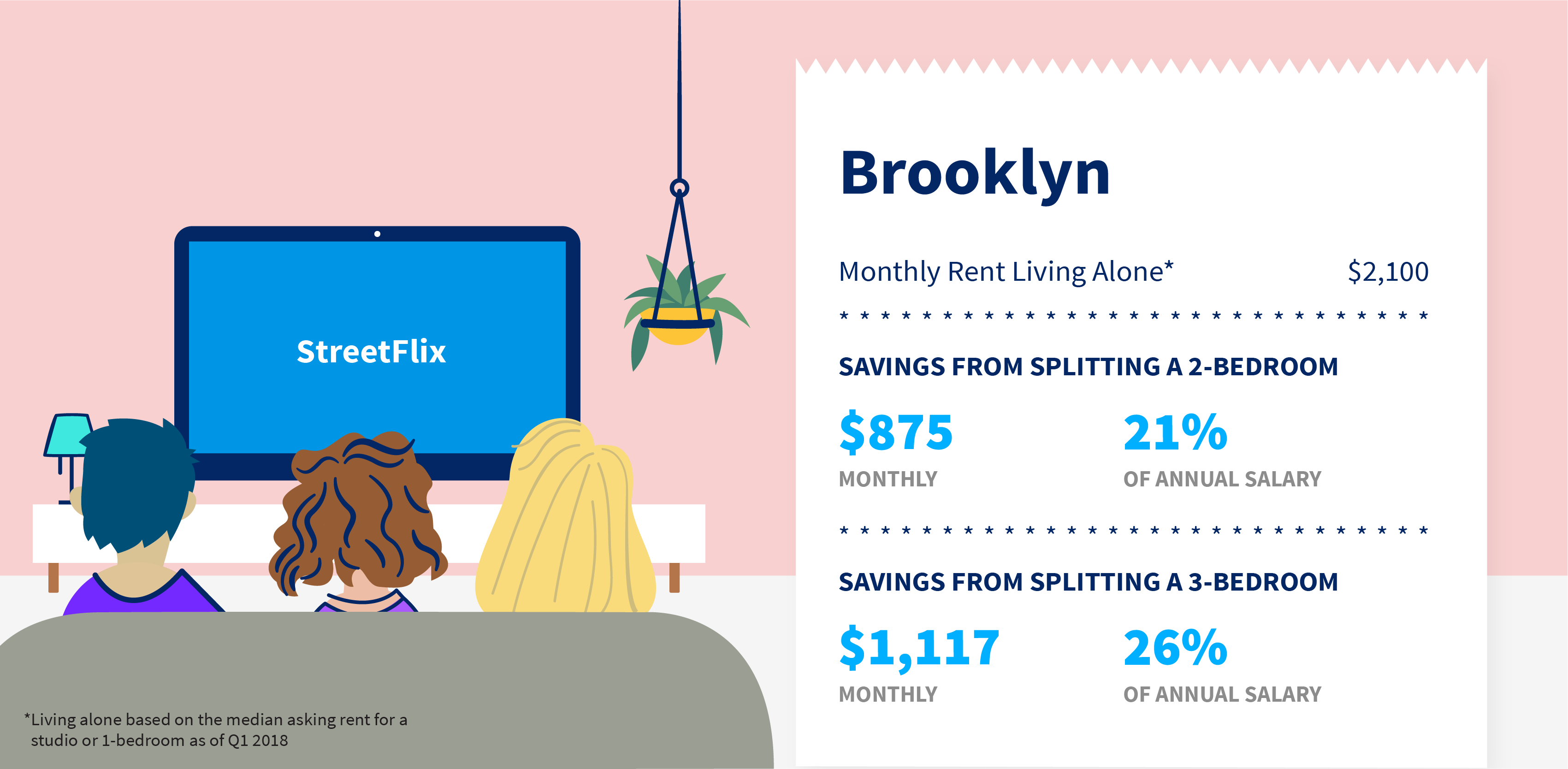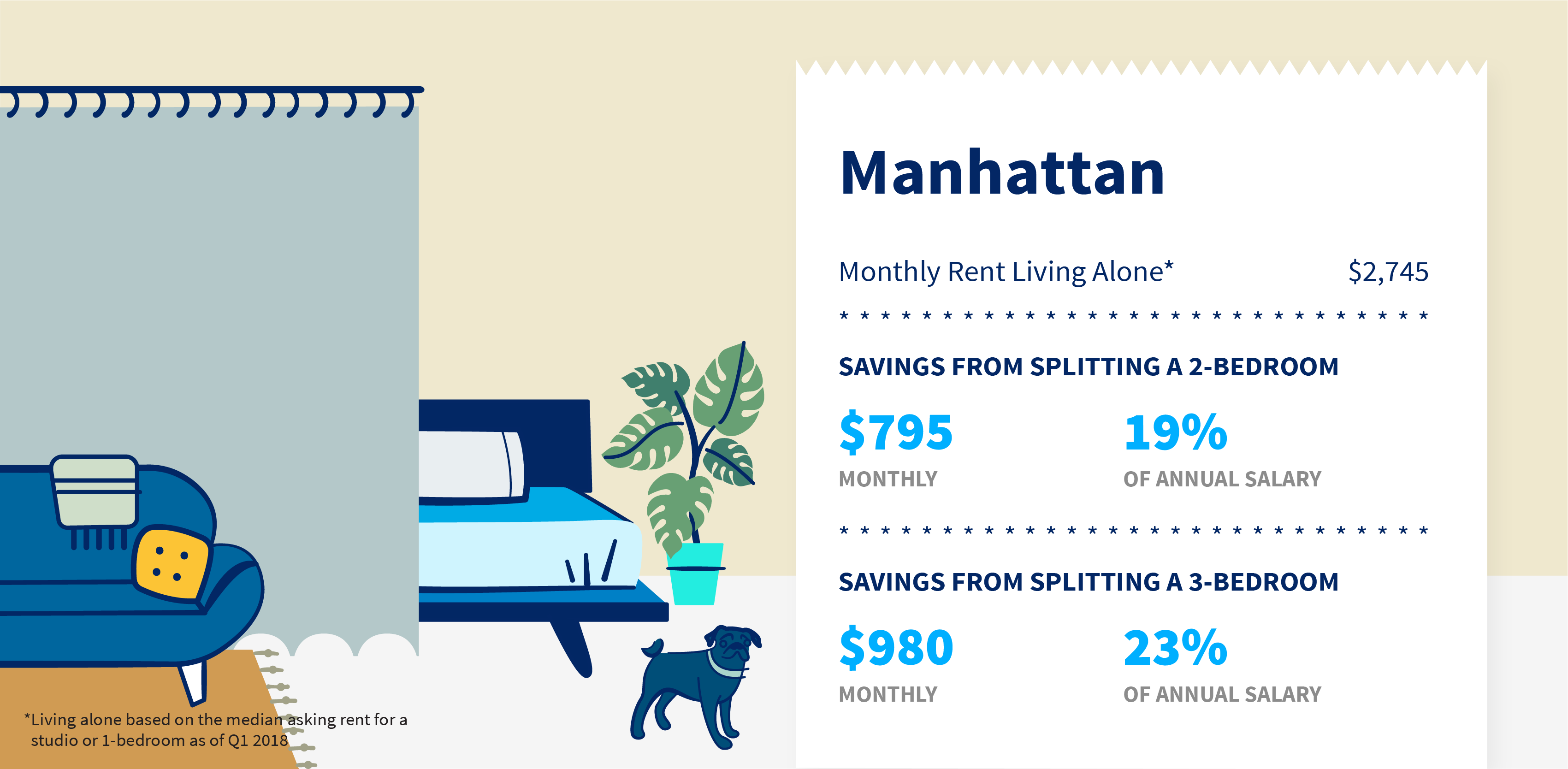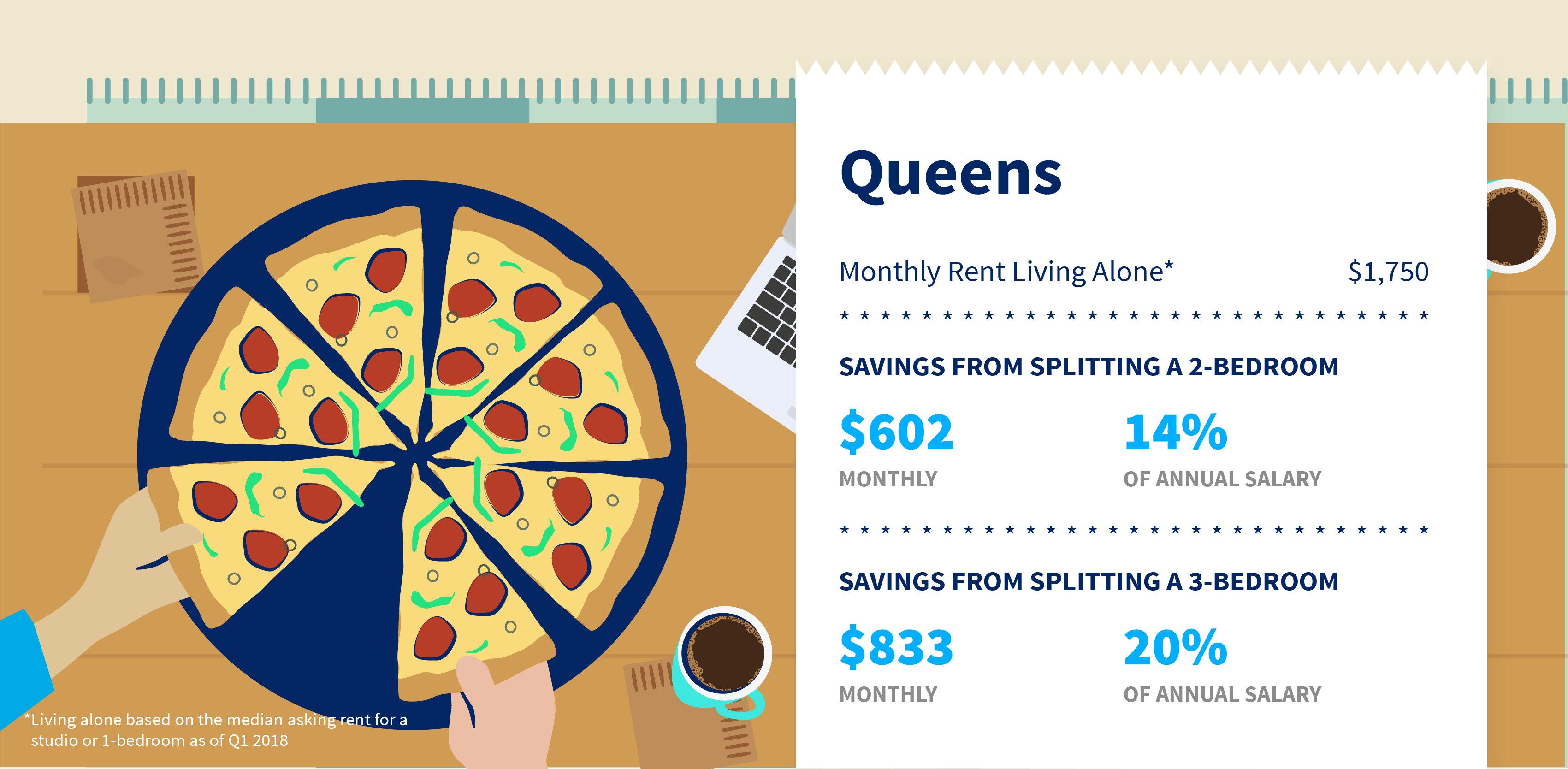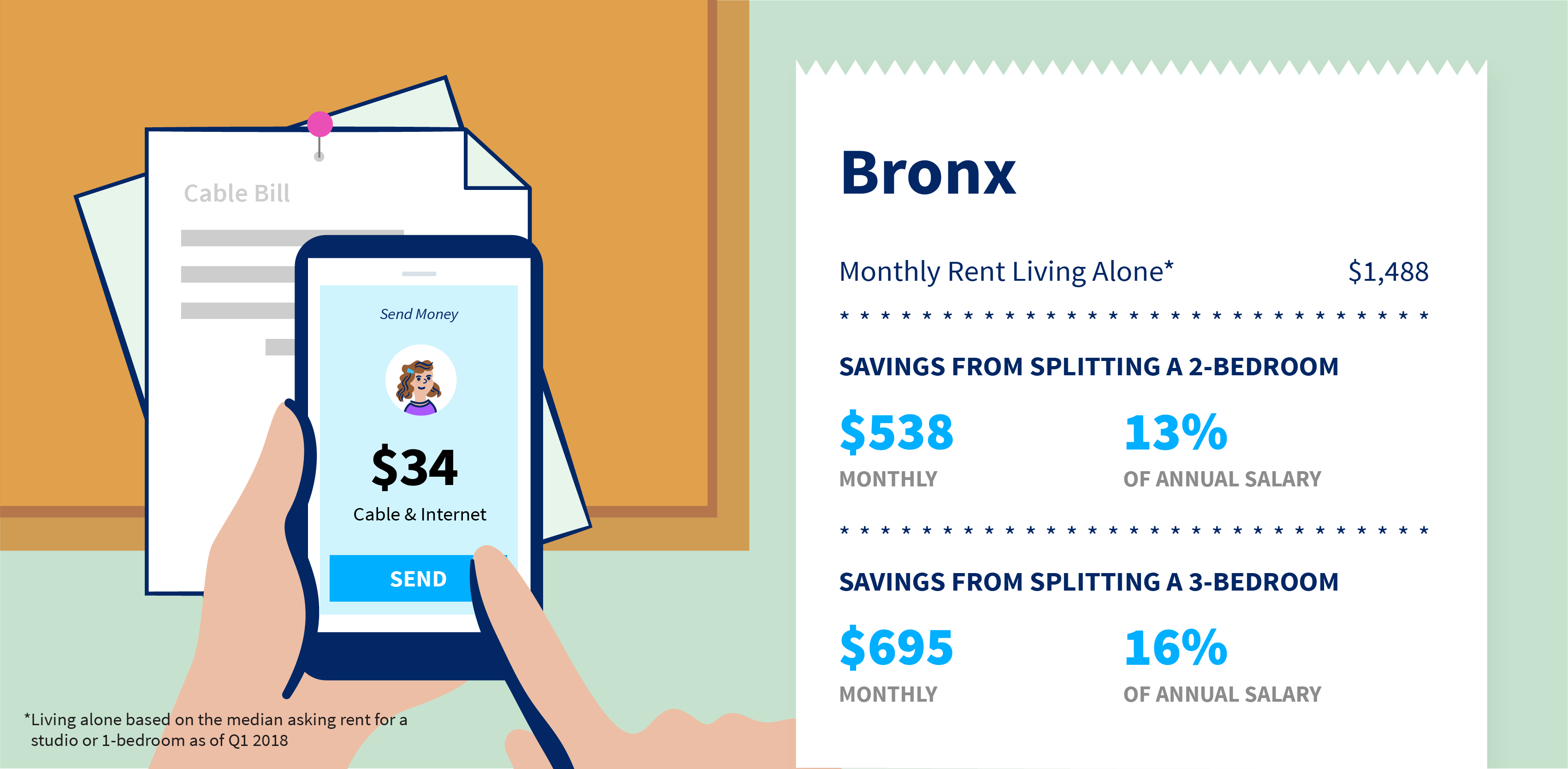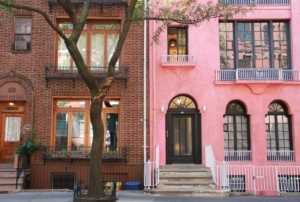Ah, summer in New York: While residents are busy leaving town, a new crop of college graduates descends upon the city in search of first jobs, new friends, and affordable apartments to call home. They’re heading here in droves: nearly half of new grads across the country said they’d like to move to NYC, which raises the question of where and how they’ll all live in this crowded, expensive metropolis.
The average recent college graduate in the U.S. will earn $51,000 per year in their first full-time job — though, given the wide variety of positions in New York, it’s safe to say many new grads will make a lot more and a lot less.
The common rule that one should spend no more than 30 percent of their annual salary on housing means the average new grad can budget roughly $1,275 per month for rent. How many New York apartments can they get for that price? Not many — actually less than 1 percent of what’s available on StreetEasy, unfortunately. Which is why so many young New Yorkers take on roommates.
But is the sacrifice of sharing space really worth it? Here, we dig into the data to find out how much taking on a roommate or two actually saves in New York City — and how those savings change by borough and neighborhood.
Adding a Roommate in NYC Will Save Nearly $13K Per Year
Looking at median asking rents for apartments on the market in the first quarter of 2018, the potential savings from sharing a 2- or 3-bedroom apartment compared to renting one’s own studio or 1-bedroom are substantial.
Recent grads moving to NYC would save $12,600 per year — a quarter of the national average starting salary — by taking on one roommate, and nearly a third of their annual salary by living with two roommates, as opposed to living in a studio or 1-bedroom apartment alone. That translates to $1,050 per month in savings with one roommate, and a whopping $1,333 per month, or $16,000 per year, with two.
Doubling Up Offers the Biggest Savings in Brooklyn
In areas where the cost of housing is higher — such as the most desirable neighborhoods of Brooklyn and Manhattan — new grads generally stand to save more by sharing their apartments.
While it might seem that savings would be greater in Manhattan than Brooklyn, surprisingly, that’s not the case. Because studios and 1-bedrooms are disproportionately expensive in Manhattan relative to larger apartments, new grads will actually save less by adding roommates in Manhattan than they would in Brooklyn. However, the savings are still greater in both of these boroughs than in the Bronx or Queens, where rents are lower.
With the median asking rent for a 1-bedroom or studio in Brooklyn sitting at $2,100, compared to $2,450 for a 2-bedroom, the savings pocketed by sharing are substantial.
When splitting a 2-bedroom, the monthly rent per roommate comes out to $1,225 — falling nicely within the $1,275 recommended budget for a new grad. Sharing a median-priced 2-bedroom in Brooklyn would thus save each roommate $10,500 per year, or 21 percent of the average starting salary. With three roommates sharing a place in Brooklyn, savings grow to $13,404 per year, or 26 percent of annual salary.
Sharing in Manhattan Still Costs Nearly 50 Percent of a Grad’s Income
While not quite as drastic as Brooklyn, Manhattan offers a similar picture of cost savings for new grads willing to pair up. The median asking rent for a studio or 1-bedroom in the borough is $2,745, which puts living alone out of reach for many new grads.
But by sharing a 2-bedroom instead of living singly in a 1-bedroom or studio, a recent grad living in Manhattan would pay $1,950 per month, saving $795 every month and $9,540 per year (19 percent of their annual salary). Taking on a roommate means they’d end up spending 46 percent of their yearly salary on rent, as opposed to 65 percent if living alone. That’s still a whole lot, but it’s getting a bit closer to the ideal 30-percent-of-income figure.
Adding another roommate and splitting a 3-bedroom would save $980 a month, or $11,760 a year, translating to 23 percent of annual salary. For an average new grad, that means paying 42 percent less of their annual income on rent than if they rented a studio or 1-bedroom alone. In popular neighborhoods like the West Village, Gramercy Park and Nolita, where spaces are small and asking rents are high, potential savings are even more pronounced.
In Queens and the Bronx, Roommate Savings Shrink
In the outer boroughs of Queens and the Bronx, the potential savings from adding roommates shrinks — but so do the asking rents. A studio or 1-bedroom would cost a new grad a median of $1,750 per month in Queens and $1,488 per month in the Bronx — prices much more within reach than those of Brooklyn or Manhattan.
The savings here are smaller but still significant, averaging $7,224 per year with one roommate in Queens and $9,996 with two. (That’s 14 and 20 percent of a grad’s starting salary, respectively). Median monthly rent per person would come out to $1,148 when split evenly between two roommates, and $917 between three — figures well within the recommended budget for a new grad.
In the Bronx, recent grads will save the least of the four boroughs analyzed [i] but will also pay the least in rent to begin with. In the end, they’d pocket $6,456 a year in savings with one roommate, and $8,340 with two (13 and 16 percent of their annual starting salary, respectively). Splitting costs evenly among the household, a new grad in the median-priced apartment would pay just $950 with one roommate and $793 per month with two.
Savings Can Vary Even By Neighborhood
The savings from adding roommates varies across neighborhoods depending on the price difference between studios/1-bedrooms and 2- and 3-bedroom apartments. This may mean some surprises: neighborhoods like South Jamaica and Morningside Heights turn out to offer some of the greatest savings with roommates. Meanwhile, in the priciest neighborhoods (such as Tribeca, SoHo, Brooklyn Heights), having roommates can turn out to be more expensive than living alone — simply because of the sky-high premium on larger spaces.
Check out the table below to see how much you could save (or not save!) by sharing space in various neighborhoods across NYC.
[i] Staten Island excluded due to insufficient data.
—
Hey, why not like StreetEasy on Facebook and follow @streeteasy on Instagram?

